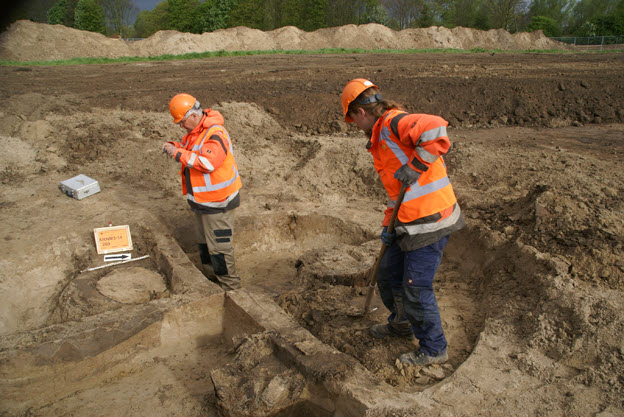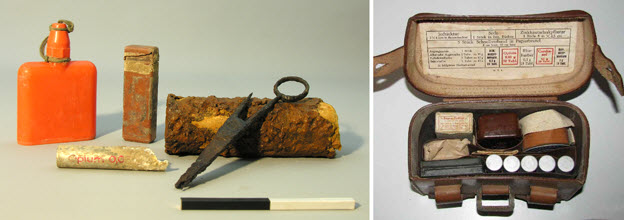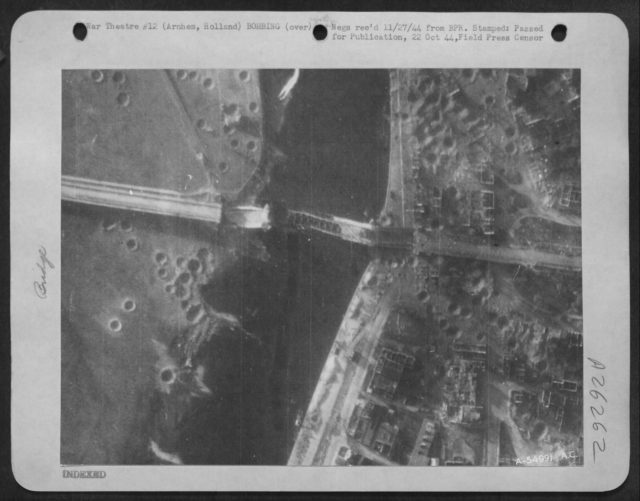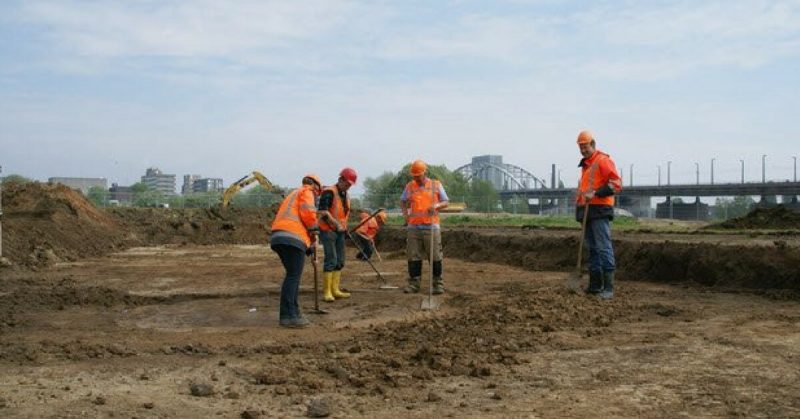Archeological research at the foot of the famous John Frost bridge in Arnhem has revealed new information about the battle and the aftermath.
On September 17th, 1944 British soldiers descended from the skies by parachute or glider to the west of Arnhem. Their objective was to capture the bridges across the Rhine river. They were then to hold on to them for up to 3 days when the ground forces, who started at the Dutch / Belgian border 60 miles away, would link up with them.
The operation failed when strong German forces which were in the vicinity of Arnhem, reacted quickly and forcefully. Only around 600 men reached the north-end of the road bridge. They were able to control it for four days before they were overwhelmed. The rest of the division tried to break through to them, but the Germans were able to defeat the lightly armed attacking paratroopers.
After several attempts on the 18th and 19th of September, what was left of the division pulled back to nearby Oosterbeek on the north bank of the river. There they held out for six more days against overwhelming odds and fierce German attacks. On September 25th they were evacuated to the South Bank, which was by then in Allied hands. Of the 10,000 paratroopers that landed, just over 2000 made it back to Allied lines.
The northern part of the Netherlands had to wait another nine months for liberation, facing another terrible winter under German occupation.
The research encompassed a large section of the terrain around the bridges. Archeologists discovered remains of the battle at the bridge and from the period immediately after the liberation in April 1945.
The archeological research revealed other aspects of the history of the city the last two years of the war, of which traces of the battle were visible in the landscape for a long time. Archeologists researched the area on the south side of the road bridge, where they dug up the remains of an anti-aircraft battery and reconstructed the sequence of events that started with the airborne landing.

Among the bigger discoveries were weapons, ammo boxes, helmets, the contents of a first aid kit, and 329 ancient coins. Also found were personal items such as an American Lemon Juice packet, pieces of newspaper and a pocketknife.
After the British at the road bridge were all captured the Germans built an anti-aircraft position (Flak-Stellung) in a single day, to protect the bridge from possible Allied air attacks. The researchers were able to uncover one of these batteries in full. This lead to new insights as to how the regulations were followed in the field.

The Germans feared that the Allies would try to destroy the bridge they fought for so recently. It was the only bridge across the Rhine left standing which allowed the Germans to reinforce the area between the Rhine and Waal river, soon to be called the Island.
In the end, the anti-aircraft position was not able to save the bridge. Allied bombers attacked the bridge October 6th, 1944 but because the bombs had missed their target, they returned the next day. Then they scored several direct hits destroying the bridge.

The surrounding area was heavily cratered moon landscape after these attacks. After the liberation debris from the battered city and whatever was found on the former battlefield was dumped in the craters to fill them in and even out the landscape making them time capsules for the archeologists.
Many personal items once owned by the British and Germans that fought at the battle were discovered as well as twisted steel from the bridge. Also found were pieces from the temporary Bailey bridges that spanned the Rhine river after the liberation.
